My friend, Kajal and I had been discussing going for a road-trip somewhere in Europe much before the release of the movie ‘Zindagi Na Milegi Dobaara’ (ZNMD). The movie did convince us to zero in on Spain being that European country.
And as I had just learnt level 1 of Spanish, I was keen to try and hone my skills. Read about my experience with Spanish in Spain.
Our road trip was nowhere close to being as luxurious as that in ZNMD and definitely needed a lot more planning, budgeting and researching than a simple “Vamos amigos”!

Contents
Shengen Visa for Spain
I have to admit I HATE going through the entire visa process. Filling the exhaustive forms, taking multiple printouts and visiting the visa office really takes the fun out of the planning process.
Having a weak passport does not sit too well with my love for travel, which unfortunately means I am left with no option but to go through the process.
This was my third Shengen visa but the issue is Spain had different requirements. At least it did when I applied for it in 2018.
My application was not accepted as I was flying into Barcelona and flying out of Madrid but did not have internal travel tickets. This was a mandatory requirement by Spain embassy which does not work if you want to go with the flow (which was our plan).
I then had to book a bus ticket from Barcelona to Madrid and reapply. The wait became quite stressful as it took till nearly a couple of days before my travel date for the visa to arrive.
It seems the Spain embassy has gotten rid of that particular requirement now – thankfully so. Do make sure to prepare documents as per the checklist on this site.
Gibraltar Visa for Indian Passport
One of our confusions was regarding Gibraltar.
Since Gibraltar is a British overseas territory, we were not sure if the Schengen visa would be valid here. Kajal had a UK visa, but I did not and I was not going to apply for it only to visit Gibraltar.
We tried to check online for the visa rules, but could not find any conclusive information for Indian passport holders.
The Plan
Since we both had to take holidays from our offices, and needed to coincide our leaves, we could only afford about 10 days for this trip which meant that we could only cover a part of Spain on our road-trips.
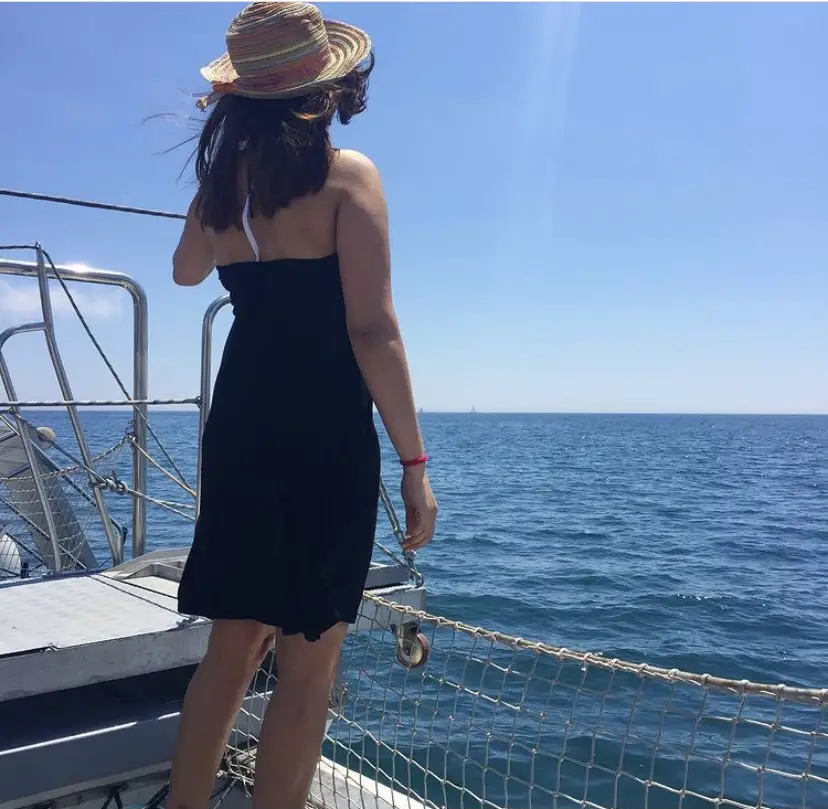
After a lot of deliberation, we decided to fly into Barcelona and fly out of Madrid and spend two days in each of these cities.
We didn’t want to hire a car in these cities as that would limit the kind of accommodation that we could look for (with parking) and also we believed it would be best to explore these cities on foot.
The two options we considered were – take a domestic flight to either south Spain (Andalucia) or north Spain (San Sebastian), following which we could then hire a car.
This debate didn’t last too long as we both preferred visiting south Spain but the following one, i.e. which city to head to, was a much longer one.
Nearly every city was on the table – there was a point when we even discussed driving into Portugal.
The cities we considered were Valencia, Malaga, Mijas, Granada, Ronda, Marbella, El Caminito del Rey, Tarifa, Gibraltar, Cadiz, Seville and Cordoba.
Due to the confusion regarding Gibraltar visa, we opted to rule it out.
After a lot of research, the final plan was as follows:
We fly into Malaga on an afternoon, hire a car at the airport, explore the city that very day. Next early morning, we drive to Tarifa exploring Ronda and Marbella on the way. Stay the night at Tarifa and next morning explore that city before driving to Seville via Cadiz and return the car at the airport.
This way we were only renting the car for 2 days. It is definitely more expensive to return the car in a different city but for us the convenience was worth it.
According to our research, the lanes in Seville were narrow and hence driving and parking would not have been easy especially as we wanted to stay at the city centre.
Also, Seville again was a town we wanted to explore on foot and enjoy our sangrias without worrying about driving. So we concluded that a car would be more of a hassle here than a convenience.
The final plan was:
- Barcelona: 2 nights then fly to
- Malaga: 1 night then drive to
- Tarifa: 1 night then drive to
- Seville: 2 nights then take the bus to
- Cordoba: 1 night then take the train to
- Madrid: 2 nights
All in all a 10 day-9 nights plan.
Driving in Spain for Indians
There are two issues here.
Firstly, if you have an Indian driving license, you need to apply for International driving permit.
Secondly, Spain is one of the countries with left hand driving. I think that’s not that big a deal but different people could have a different opinion about it.
Thankfully, Kajal had an American driving license and is also used to left hand driving which made the whole deal easier for us.
Part 1: Getting to Malaga
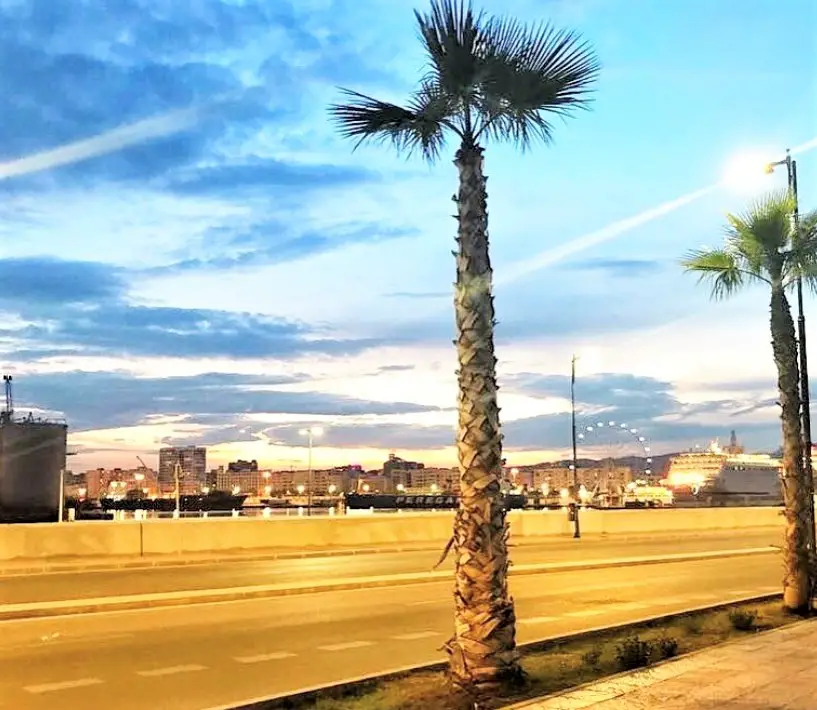
After spending two amazing days in Barcelona, we reached the domestic airport for our flight to Malaga.
Unfortunately, that flight got delayed by 3 hours due to which it was late evening by the time we reached our destination.
We had plans to explore the Malaga sea front and Gibralfaro hill in Malaga. However, due to the delay we had to knock Gibralfaro off our list.
We checked into our Airbnb appartment and then drove to the port for a stroll and dinner.
Part 2: Malaga to Ronda
We left from Malaga early in the morning. The idea was to reach Tarifa via Rhonda and Marbella.
There were three road options for Rhonda: via A354, A367 and via Marbella. We were told the drive from Marbella to Ronda is very scenic.
Since we were anyways going to take that road on our way from Ronda to Marbella, we decided to choose one of the alternate routes for the journey to Ronda.
As per our Airbnb host, the A354 route was more scenic and also winding which could be an issue if we were not comfortable driving on such roads.
We opted to take that call closer to the ‘decision-making’ junction and with Kajal seeming comfortable with the car, we went with the A354 option.
The road was definitely as circuitous as it had been described but for people who are used to driving on Indian hilly roads, this looked quite smooth. Hardly any traffic – Excellent road condition – Excellent car condition.
We comfortably reached Ronda without any stops in about 2 hours. The only con as per us was the difficulty in overtaking due to the winding roads.
Part 3: Stay at Ronda
We parked at the city parking plaza which was about 15-minute walk from Puente Nuevo which is the star attraction of this city. The city of Ronda is built on the El Tajo canyon with the old and the new cities perched on two sides of this canyon.
In the 18th century due to the population increase it became necessary to build a bridge connecting these two cities. The issue was the height – the bridge had to be built over a 120 m deep chasm. The first attempt at constructing the bridge took only about 5-6 years, but soon collapsed killing 50 people.
The new bridge took 34 years to build and was successfully completed in 1793 with a sturdy three arched design. Above the central arch is a chamber which served as a prison during the Spanish civil war and as per some rumors, it was being used as a torture chamber. Some stories claim that prisoners were even thrown out of the window of this chamber – a 120m plunge.
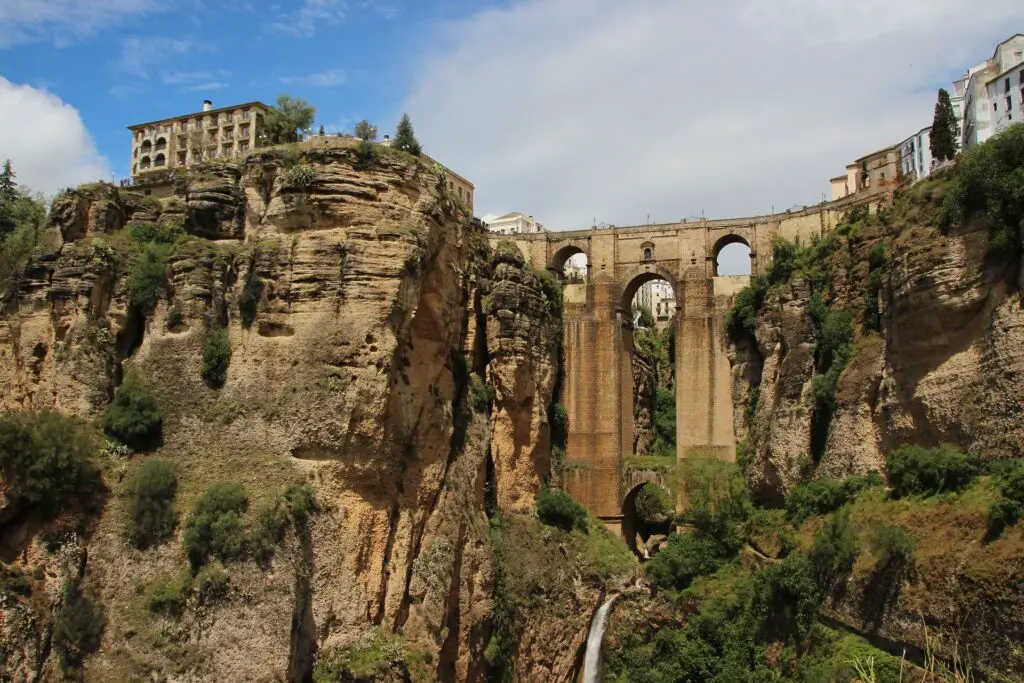
You can visit this chamber for a nominal amount (Eur 2) – this room is now an exhibition centre. Be prepared for some dark, dingy, stinky chambers though. Not much to see according to me.
On the old town side, there is a path to walk down to the gorge. If you have time, do that as the view of the bridge would be best from there. Even if you are not an architecture aficionado, you will find the bridge to be a stunning creation.
We spent about two hours walking around and then headed to the city for a quick lunch.
Part 4: Ronda to Tarifa via Marbella and Gibraltar
The stretch from Ronda to Marbella was the most scenic bit of our Andalucia drive. Again, the only issue here was the difficulty in overtaking. On a normal day, we would have been happy to drive slowly and take in the views, but we could not as we had to reach Tarifa on the same day.
We reached Marbella in about one hour and parked our car near the pier ‘Puerto Banus’.

The first impression of the city was that it was ‘posh’. Everything from the cafes to the shops to the yachts to the restaurants spelt luxury. We strolled around the pier, clicked some coffee and after spending about 2 hours, we restarted our journey towards Tarifa.
On the way, we decided to drive towards Gibraltar hoping to get a view of the Gibraltar rock. We did manage to do that and spent some time posing in front of the rock (on Spanish land).
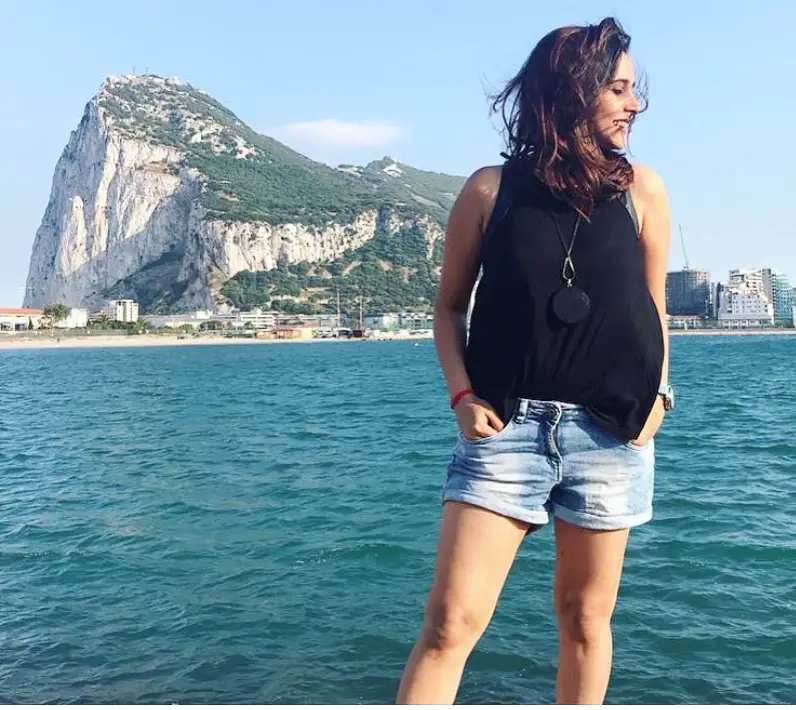
Once done with the posing, we decided to walk to the immigration point and check the exact rules for Gibraltar visa.
Turns out that your Shengen visa is valid for entry to Gibraltar. The only condition is that it needs to be a multi entry visa.
Immigration took two minutes and we crossed over to Gibraltar. Since it was getting late (nearly 7 PM), and we had left our car on the other side of immigration, we quickly posed with the UK iconic post box, bus and the flag and hopped back on to Spanish land.
Wish we had known this bit prior to our trip – would have loved to go the top of the Gibraltar rock.
We restarted our journey and in about 40 minutes we arrived at our Tarifa accommodation.
Part 5: Stay at Tarifa
We had booked a hostel with an exclusive room and attached bathroom at a central location in Tarifa. By the time we reached Tarifa, it was already 8PM. We quickly checked in and went to a local bar for some Sangria and Tapas.
The next morning we walked around the city, had one of our most amazing breakfasts in a cute café called Café Azul.
Tarifa is located at the southernmost tip of the Iberian Peninsula and due to its location and wind conditions, it is a famous spot for Wind surfing and Kite surfing. The beaches here are straight out of those travel magazines – sparkling blue water and pristine white sand.
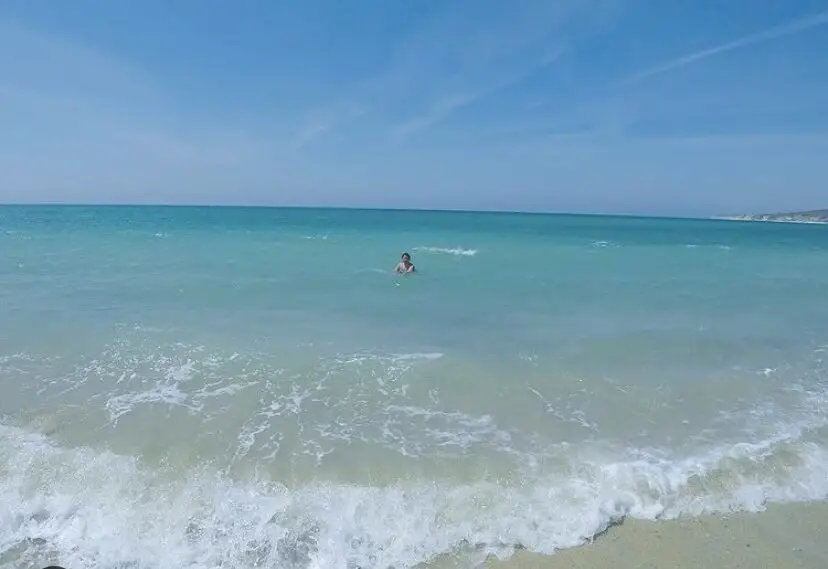
Tarifa is at a distance of only 14 km from Africa and from here you can take a ferry to visit Tangiers (in Africa). The ferry ride time is about 40 mins one way due to which this is a popular option. The only con if you have an Indian passport is that you need a visa to visit Tangiers. If you still want, you can take the ferry to and fro ride without the visa but if you want to step foot on African soil, you need that visa. For visa rules for your country click here.
We walked around the coast of Tarifa city and then drove towards Valdevaqueros and Punta paloma beach which was on our way to Cadiz. Since we had to reach Seville on the same day, we reached the beach early (around 9 AM) and were the only ones on the beach for the longest time.
It was a bright sunny day and would have been an ideal beach day if only the water wasn’t that cold. After lazing around in the sand (and clicking a few pics, of course), we decided to get out of our comfort zone and swim in the nearly freezing water.
Being from a tropical country, I am used to lukewarm sea water temperature. One of my regrets is of going to Bondi beach in Sydney and not getting into the water because of its nearly freezing temperature.
So I decided to just do it.
We stripped to our swimsuits and got in. It felt ice cold. I was told that it would start feeling better after a while, provided I kept moving my body.
I swam vigorously, mostly butterfly stroke for maximum heat generation. Dived into the water a couple of times. Splashed around. Dolphin kicked strenuously.
After 10 minutes, it felt marginally better.
Was it fun? Umm, not really. But it did make me appreciate the sea water back home.
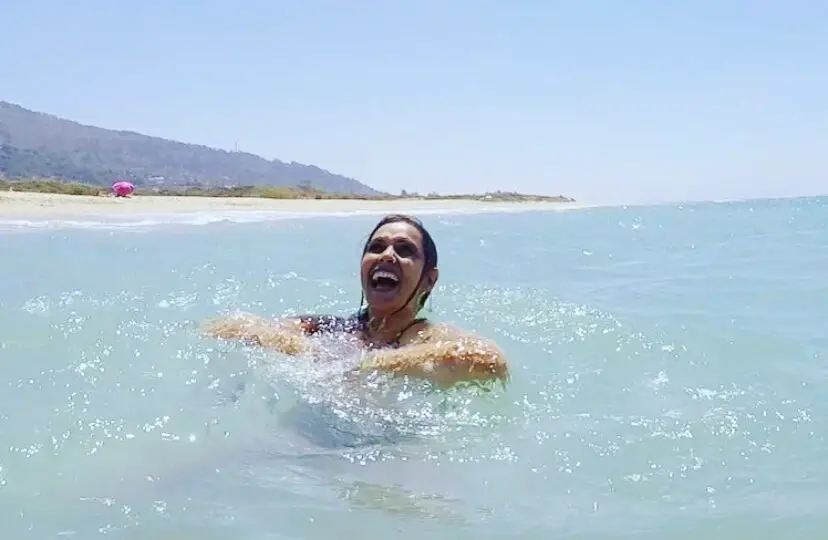
After spending about two hours on the beach by ourselves, people started troupe in steadily. And these were not the kinds who came to the beach to laze around and get toasted. No. These were the adventurous kinds – kite surfers.
Within half an hour, the sky was filled with colourful kites. Such a treat to watch.
The first thing we noticed about these surfers was that they were all wearing wet suits. So I guess the reason for us finding the water too cold was not that we were not used to it. It was cold water. Period.
We walked on the beach for a while observing and soaking in the sudden activity. Towards the north end of this beach are sand dunes (about 100m high) – a natural vantage point.
We spent about four hours at this beach and then headed towards Cadiz.
Part 6: Tarifa to Seville via Cadiz
If you take the E-5 route, you will cross the town of Vejer de La Frontera which sits atop a hill with beautiful white houses. A picturesque scene. Do keep an eye out for this even if you don’t have time to visit this town.
Cadiz is a small town which is actually a narrow piece of land that juts out into the sea.
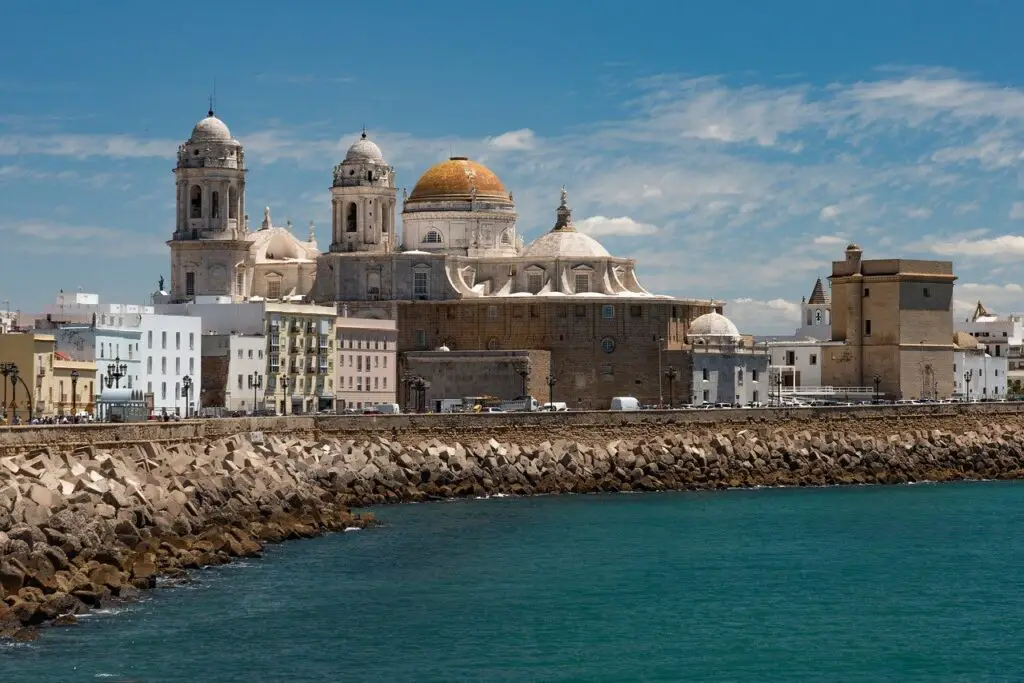
A historical town with a lot many important landmarks. We had planned to have lunch here, unfortunately finding a parking spot in this densely populated city was an issue.
Also, we were getting late as we had spent much more time at Tarifa beach than initially planned.
We decided to drive through the city and have lunch somewhere on the highway which is what we did.
The drive till Seville airport (where we had to return our car) was smooth and mostly through E5.
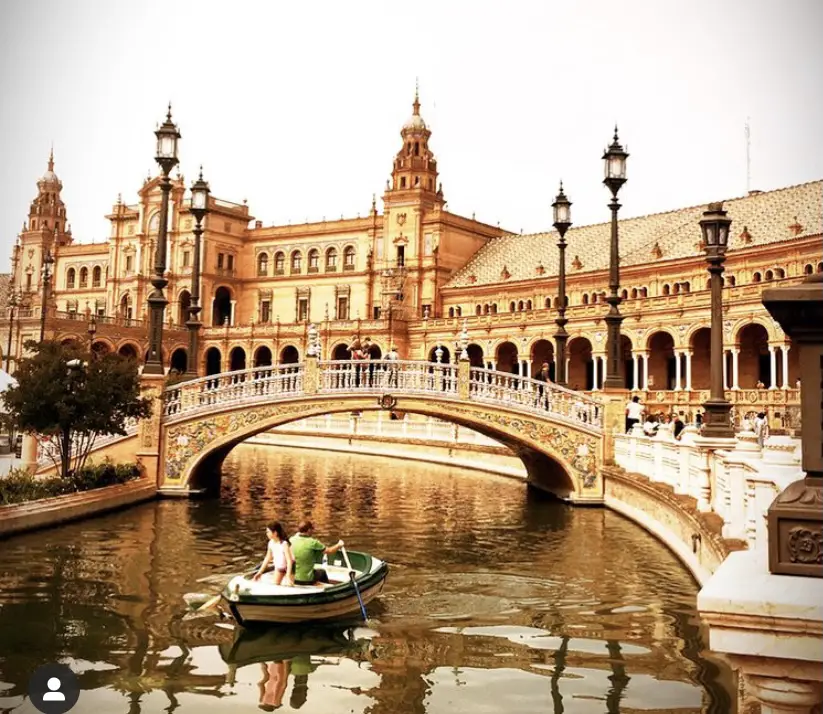
Tips for Andalucia Trip
- Most of the accommodations that we had booked did not have a lift facility. Try to keep your luggage as light and compact as possible
- Make sure the accommodation that you choose includes parking. Most places have street parking which can sometimes be a struggle. In Tarifa, the parking spot that we finally got (after driving for almost 15 minutes) was at least 300m away from our accommodation.
- Plan to visit during the summer months so that you have longer days. We used to start our day at about 6AM and used to be out till about 10PM
- If you plan to swim in the sea water, carry your wet suit along.
